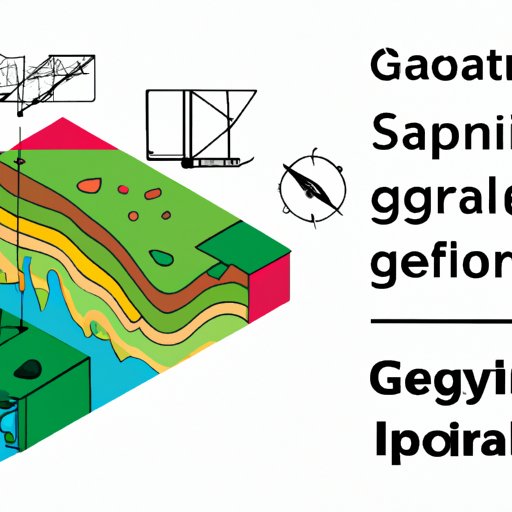Introduction
Geography science is a vast and complex field that encompasses many different aspects of the physical and social world. It is the study of the Earth’s surface and the relationships between people and their environment. The purpose of this article is to provide an overview of the science of geography, including its various branches, the role of technology in the field, and its connection to sustainability.

Exploring the Basics of Geography Science: An Overview
At its core, geography science is the study of the physical and human characteristics of the Earth’s surface. It is a multi-disciplinary field that draws from many other fields, including geology, climatology, ecology, sociology, anthropology, economics, political science, and history. Geographers use a variety of tools, such as maps, charts, aerial photographs, and satellite images, to study the Earth’s surface and analyze the relationships between people and their environment.

Understanding the Different Branches of Geography Science
Geography science can be divided into three main branches: physical geography, human geography, and regional geography. Physical geography focuses on the natural features of the Earth’s surface, such as landforms, climates, soils, and vegetation. Human geography studies the interactions between humans and their environment, including population, settlement patterns, resource use, economic activities, and cultural influences. Regional geography looks at the relationships between different parts of the world, including population distribution, economic development, and international relations.

Investigating How Geography Science Impacts Our Lives
Geography science has a profound impact on our lives. For example, it can help us better understand global climate change, which is affecting the Earth’s climate in unprecedented ways. It can also help us anticipate and prepare for natural disasters, such as floods, earthquakes, and hurricanes. Additionally, geography science can help us identify and analyze social and economic trends at the local, regional, and global levels.
Examining the Role of Technology in Geography Science
Geography science has benefited immensely from advances in technology. In particular, Geographic Information Systems (GIS) technology has revolutionized the field by allowing researchers to collect, store, and analyze spatial data. Similarly, remote sensing and satellite imagery have enabled researchers to observe and measure Earth’s surface in greater detail than ever before. These technologies have enabled researchers to gain new insights into the Earth’s physical and human landscapes.
Taking a Closer Look at the Study of Human-Environment Interactions
The study of human-environment interactions is an important aspect of geography science. This includes understanding the impacts of humans on the environment, such as deforestation, pollution, and climate change. It also involves studying the ways in which environmental changes, such as rising sea levels or extreme weather events, can affect human populations.
Exploring the Connection Between Geography Science and Sustainability
Geography science is closely connected to the concept of sustainability, which seeks to ensure that our current practices do not compromise the ability of future generations to meet their needs. By studying the impacts of human activities on the environment, geography science can help inform decisions about sustainable development. It can also help us identify ways to reduce our environmental impacts, such as conserving energy and water, reducing waste, and protecting natural resources.
Conclusion
In conclusion, geography science is a complex and diverse field that has a tremendous impact on our lives. By exploring the physical and human characteristics of the Earth’s surface, we can better understand global climate change, natural disasters, and social and economic trends. Additionally, advances in technology, such as GIS, remote sensing, and satellite data, have enabled us to gain new insights into the Earth’s physical and human landscapes. Finally, geography science can help us understand the connections between human activities and the environment, which can inform decisions about sustainable development.
(Note: Is this article not meeting your expectations? Do you have knowledge or insights to share? Unlock new opportunities and expand your reach by joining our authors team. Click Registration to join us and share your expertise with our readers.)
